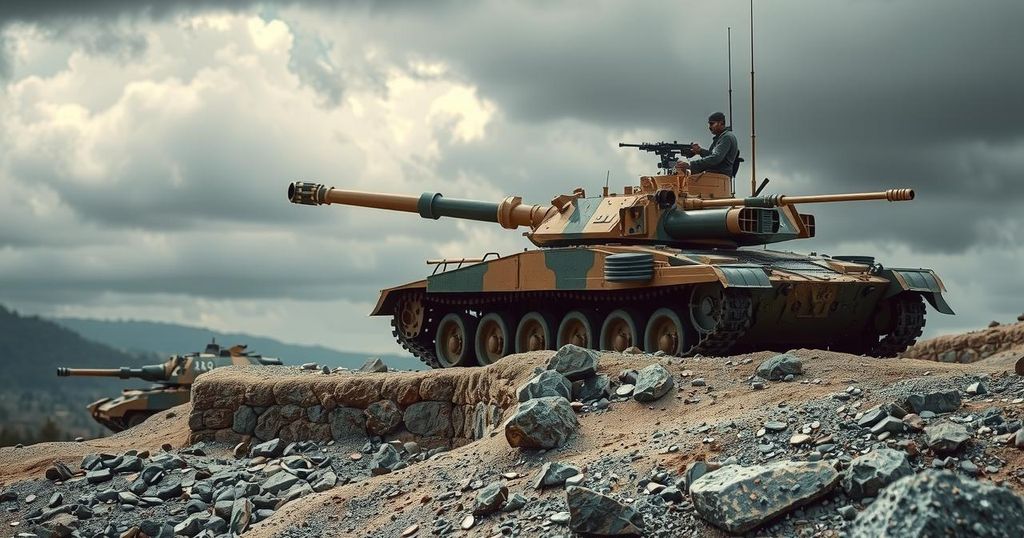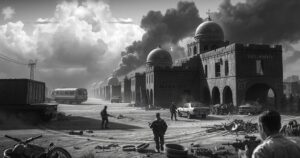As Trump Floats Regime Change in Iran, Past US Attempts to Remake the Middle East May Offer Warnings

As President Trump brings up the idea of regime change in Iran, historical lessons from U.S. interventions in the Middle East raise concerns about potential chaos. Previous efforts have led to prolonged conflicts and instability, challenging the feasibility of such strategies now. The situation hints at a complex landscape, both within Iran and for U.S. policy moving forward.
DUBAI, United Arab Emirates — The recent comments from President Donald Trump about pursuing “regime change” in Iran have sparked discussions about past American ventures in the Middle East. Historically, U.S. attempts to reshape the region through military efforts have not always yielded favorable outcomes, and this raises concerns regarding another potential escalation in the Iran-Israel conflict.
On social media, Trump questioned why regime change should not be considered, stating, “If the current Iranian Regime is unable to MAKE IRAN GREAT AGAIN, why wouldn’t there be a Regime change???” This statement follows bombings of Iranian nuclear sites by the U.S. and responses from Iran.
Press Secretary Karoline Leavitt emphasized on Monday that Trump’s stance has not significantly shifted, referencing his previous critiques of prolonged wars and the U.S. involvement in overseas conflicts. “The president’s posture and our military posture has not changed,” she asserted, hinting that if Iran were to persist with its nuclear ambitions, a tougher approach might be necessitated.
She further floated the idea that regime change might be driven by the Iranian populace rather than direct U.S. intervention. “If they refuse to engage in diplomacy moving forward, why shouldn’t the Iranian people rise up?” she posited, embracing a somewhat convoluted call for possible revolution, which history cautions could lead to serious repercussions.
Historically, initial military successes in conflicts like Iraq and Afghanistan quickly deteriorated. American forces quickly toppled the Taliban and dismantled Saddam Hussein’s regime. However, both countries descended into prolonged unrest marked by insurgencies and sectarian violence. With Iran’s military capabilities, including the Revolutionary Guard and Basij forces, Trump’s optimism could be misplaced.
Moreover, the experience with Libya in 2011 showed that airstrikes alone are inadequate for regime change. Moammar Gadhafi endured months of aerial bombardment before being finally subdued by rebel forces. Notably, the absence of organized insurgent factions within Iran adds to the complexity of a potential military approach.
Any instability within Iran’s security apparatus could lead to civil conflict rather than a straightforward transition to a new government. The reactions of ordinary Iranians remain ambivalent as well; while some may oppose the current regime, others might unite against foreign interventions, as shown during the 1980 Iraqi invasion.
The precedent set in Iraq revealed the pitfalls of relying on exiled opposition groups, many of whom lack any real support within their homeland. The Iranian opposition is similarly fractured, and while Reza Pahlavi, the son of the former Shah, could be seen as a unifying figure, he carries the burden of historical grievances against his family’s rule and controversial ties with Israel.
Finally, past U.S. interventions have often led to chaos rather than stability. Experiences in Afghanistan, Iraq, and Libya exhibited how insurgent factions arose, each vying for control, often exacerbated by foreign interference. The result was an increase of extremist groups and humanitarian crises as larger portions of the population fled violence. In the post-conflict world, countries often found themselves aligned more closely with adversaries like Iran than with the U.S.
In sum, the prospect of U.S. military involvement in Iran under the banner of regime change calls for careful reconsideration of history. With many examples demonstrating detrimental outcomes, the risks of chaos and further conflict loom large, putting into question the feasibility of such a strategy.
In conclusion, President Trump’s suggestions for regime change in Iran highlight the complexities and risks following a history of U.S. military interventions in the Middle East. Previous experiences suggest that swift military victories do not necessarily lead to stable governance or peace. With the Iranian populace divided and a fragmented opposition, the prospect of change could lead to chaos rather than the intended democratic reform, thus revealing the inadequacies of military solutions for political challenges.
Original Source: apnews.com






